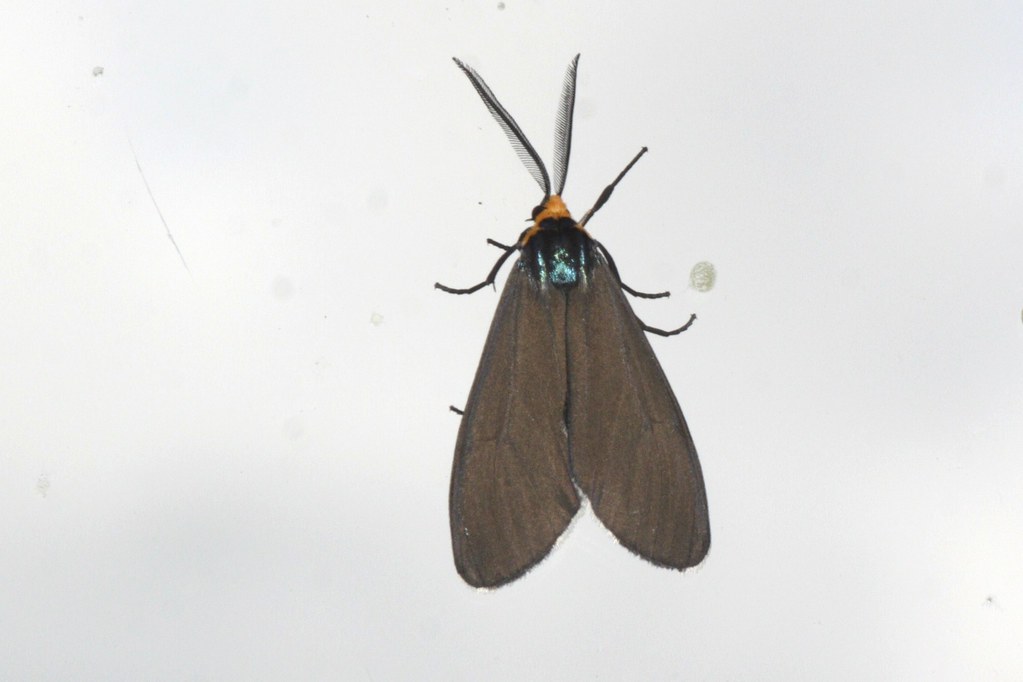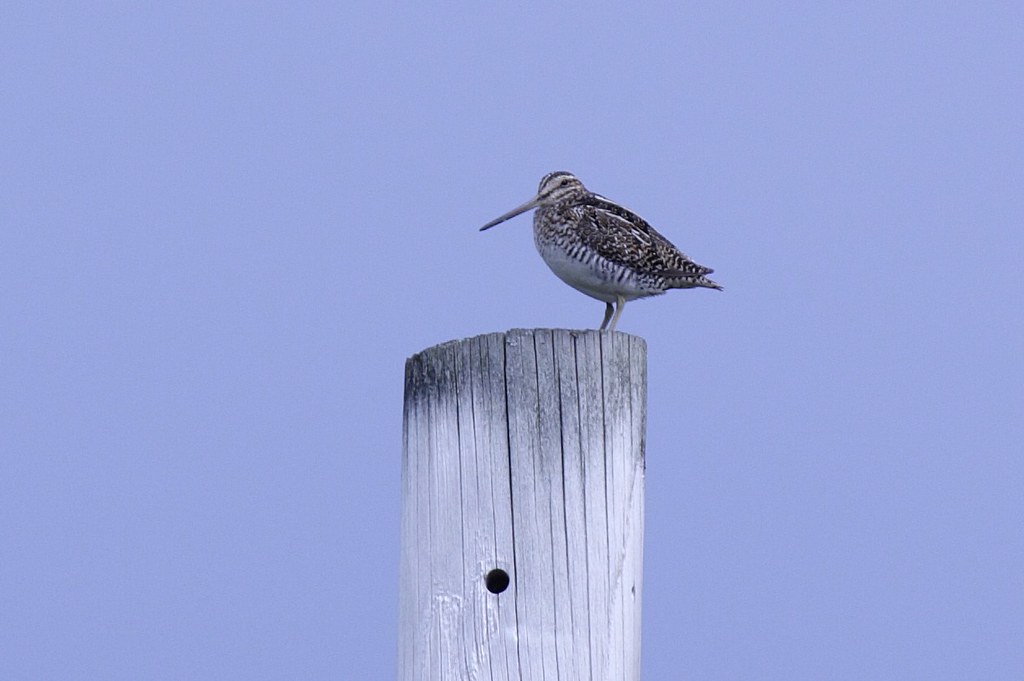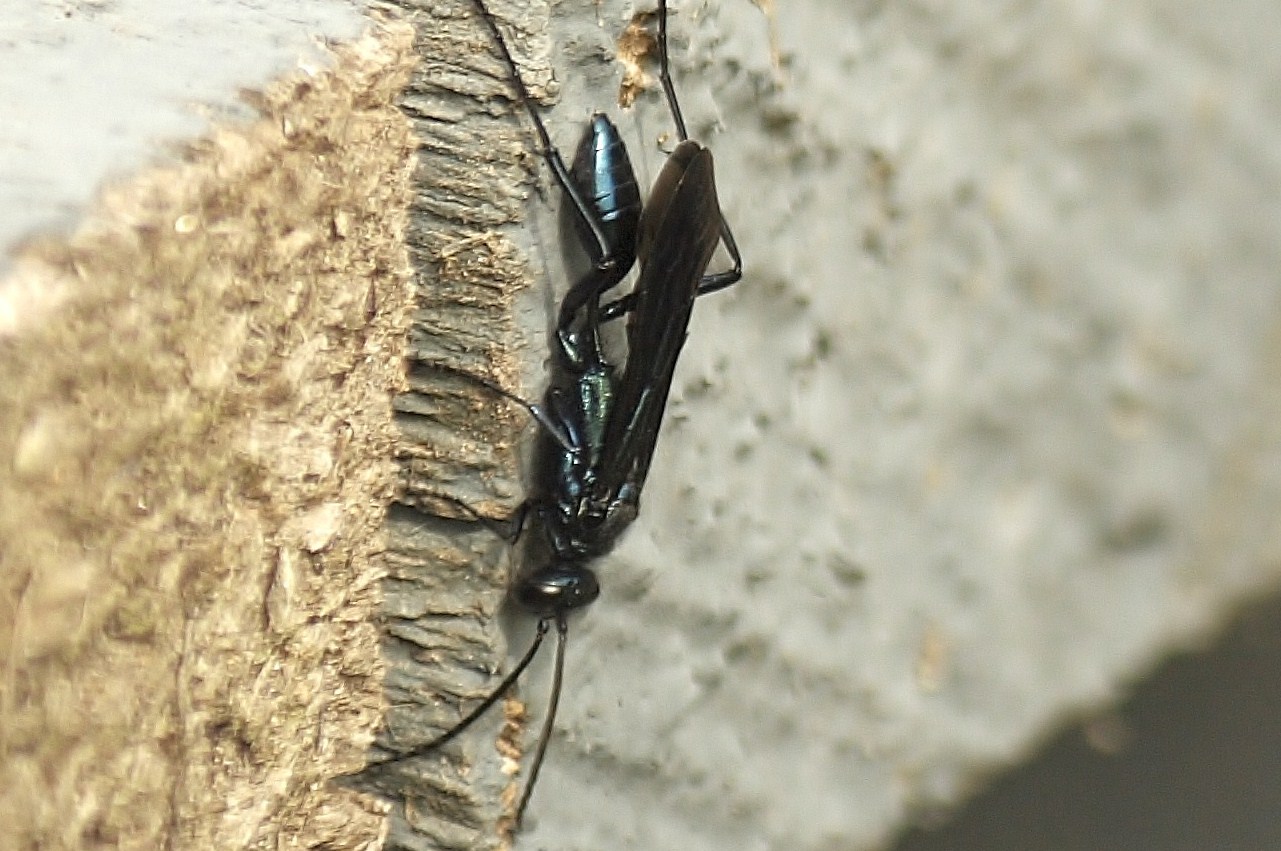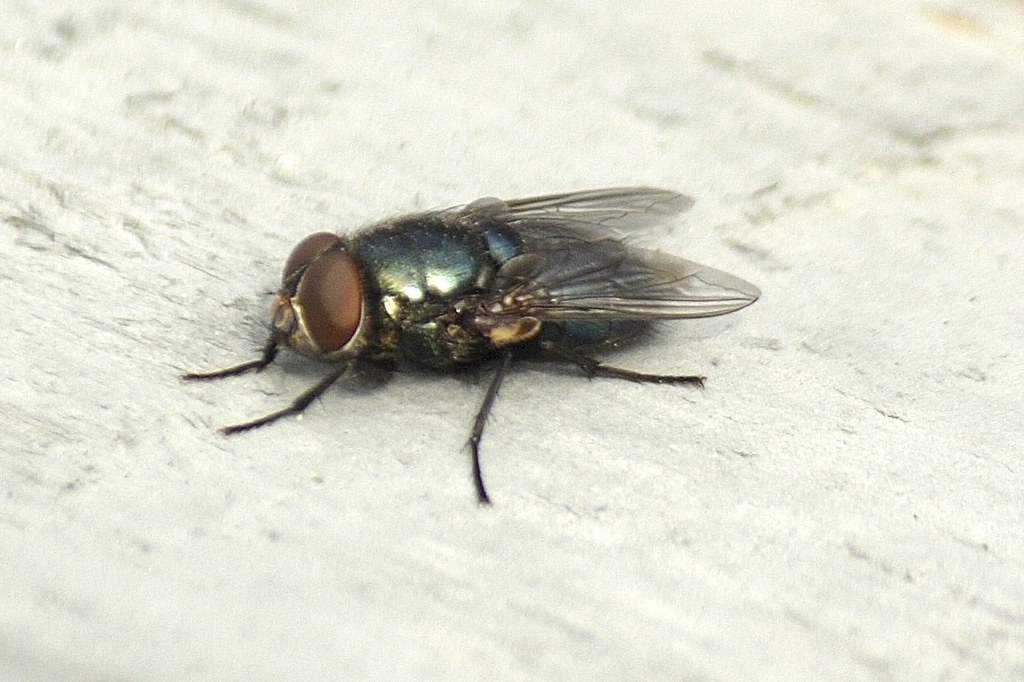 |
| Ctenucha virginica |
Family: Tiger Moths and Lichen Moths (Arctiidae)
Subfamily: Syntomine Moths (Syntominae)
Identification: The largest and most broad-winged of wasp moths in North America. Body metallic blue; head and sides of collar orange. Forewing deep grayish brown, metallic blue at base. Hindwing black. Fringes on all wings partly white.
Life history: Diurnal.
Flight: May-July.
Wing span: 4-5 cm.
Caterpillar hosts: Grasses, irises, sedges.
Adult food: Not reported
Habitat: Not reported
Range: Labrador to Pennsylvania, west to Manitoba and Kansas.
SOURCE:
Butterflies and Moths of North America
Technorati Tags: Virginia Ctenucha Moth Ctenucha virginica
Del.icio.us Tags: Virginia Ctenucha Moth Ctenucha virginica
Flickr Tags: Virginia Ctenucha Moth Ctenucha virginica
_/\_/\_










